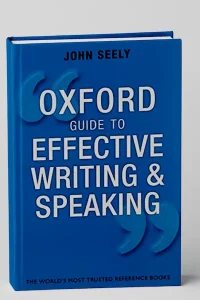The Oxford Guide to Effective Writing and Speaking is the essential guide for everyone who needs to communicate in clear and effective English, both written and spoken.
Oxford Guide to Effective Writing and Speaking
In the first section on communicating in everyday life, chapters cover everything from writing email to giving presentationsand preparing reports. John Seely also offers guidance on understanding the demands of particular audiences, subjects, and situations.
With guidelines and exercises, this book will help you to tailor your message and language accordingly. The second section on the English language givesauthoritative advice on grammar, vocabulary, spelling, and punctuation to ensure that communication is accurate as well as appropriate.
A final section examines the process of writing itself, including planning and research, drafting, and using technology.
New to this edition are chapters on writingemail and help on writing for the internet. The Oxford Guide to Effective Writing and Speaking is designed to be practical and user-friendly, with boxed exercises, guidelines, and examples.
A glossary and index make the volume easy to use and simple to navigate. This is the most comprehensive guide to using English for effective communication available; it covers an unrivaled range of situations and requirements. Perfect for use at work, at college, or at home.
About the book
The Oxford Guide to Effective Writing and Speaking is the essential guide for everyone who needs to communicate in clear and effective English, both written and spoken. John Seely looks at the key factors to consider in tailoring your material so that you get your message across, such as
understanding the demands of particular audiences, subjects, and situations.
Clearly organized, the book is arranged in four sections:
A Communicating in everyday life – covers a wide range of communications including writing emails to giving presentations and preparing reports.
B Getting your message across – focuses on important factors such as the audience, the subject, time, and purpose.
C Communication tools – offers advice on grammar, vocabulary, spelling, and punctuation to ensure that communication is accurate as well as appropriate.
D The process of writing – looks at what’s involved in writing longer pieces, including planning and drafting, research, summaries, editing, and presentation.
Full of practical guidance, this book also includes helpful ‘You Try’ sections and ‘guidelines’ to practise and reinforce what you’ve learnt. The answers to the exercises in the ‘You Try’ sections can be found at the back of the book.
This is the most comprehensive guide to using English for effective communication available; it covers an unrivalled range of situations and requirements, making it ideal for use at work, at school and university, or at home.


